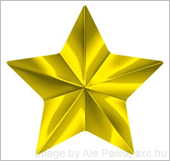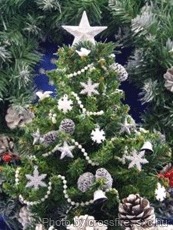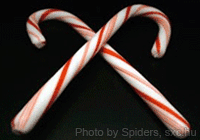
Image by Ale Paiva, sxc.hu
Over the years, many objects have become symbols of Christmas. Though these items are now standard icons of the holiday, you might not know their histories or how they came to be symbols of Christmas. Below is an explanation of some common Christmas symbols and how they came to represent the holiday.
The Christmas Star
Also called the Star of Bethlehem, the Christmas Star is what led the Three Wise Men toward Bethlehem. Carrying the gifts of gold, frankincense, and myrrh, the Three Wise Men followed the Christmas Star until they arrived at the manger were Jesus had been born.
Stars have since become an integral symbol of Christmas; they appear in many Christmas decorations and are often placed on top of Christmas trees.
Mistletoe
Mistletoe, whether real or fake, is found in many homes during the Christmas season. The plant has long been sacred to the ancient cultures of Scandinavia and Britain. That’s because the plant is an evergreen, continuing to grow new green leaves while other plants are dormant. This has made the plant a symbol of life and fertility. The reason people are supposed to kiss under the mistletoe is based on a story from Norse mythology. You can read about in our Christmas Legends guide.
Holly
Like mistletoe, holly has long been sacred to ancient cultures. It too stays green all year round. Additionally, the plant has been used for medicinal purposes and was also seen as a symbol of fertility. Some people contend that the cross on which Jesus was crucified was made from a holly tree, or that his crown of thorns was made from holly. With its green leaves and bright red berries, holly can be found in Christmas wreaths and other holiday decorations.

Photo by crossfire, sxc.hu
Christmas Tree
The most famous Christmas plant is the Christmas tree. Some historians say the tradition of decorating a tree was started by Pagans in northern Germany. Another theory asserts that Saint Boniface of Devonshire came to Germany in the 7th century and used the triangular shape of the fir tree to teach people about the Holy Trinity. Though its origins are somewhat unclear, there is no denying that the Christmas tree is perhaps the most iconic symbol of the holiday.
Bells
Bells seem to be everywhere around the Christmas season, as they are said to represent several things. For instance, they symbolize the giant church bells used to call people to Christmas services.
It is also said that the night Jesus was born, the shepherds rang bells to keep evil spirits away. Bells continue to be a symbol of Christmas today and are heard and referenced in many Christmas songs.
Wreaths
Wreaths are a common Christmas decoration found on doors and walls throughout the season. They are typically made from twigs of evergreen plants, like holly, which symbolize strength and immortality. Their circular shape, with no end and no beginning, also represents everlasting life. While the ancient Greeks and Romans wore circular headdresses made out of plants, the practice of creating wreaths for decorations started around the 16th century.

Photo by Spiders, sxc.hu
Candy Canes
By the middle of the 1600s, children across Europe were enjoying simple sticks of sugar. In 1670, though, a choir leader at the Cologne Cathedral in Germany started bending the candy sticks to resemble a shepherd’s staff, a Christian symbol long representing Jesus. Since people often decorated Christmas trees with food, these new bent candy sticks soon found themselves hanging from the branches. Eventually, peppermint oil and red stripes were added to the candy canes, making them the familiar Christmas symbol they are today.
The Christmas Star
Also called the Star of Bethlehem, the Christmas Star is what led the Three Wise Men toward Bethlehem. Carrying the gifts of gold, frankincense, and myrrh, the Three Wise Men followed the Christmas Star until they arrived at the manger were Jesus had been born. Stars have since become an integral symbol of Christmas; they appear in many Christmas decorations and are often placed on top of Christmas trees.
Colors
There are four main colors that symbolize Christmas. Though their meanings and the reasons they are associated with the holiday are certainly up for debate, here is a brief description of each one:
- Green – Just like the green plants used for Christmas decorations, green represents eternal life.
- Red – As green represents immortality, red can represent blood and our own mortality. At the same time, red can also symbolize excitement and fire.
- White – White can represent light, joy, purity, and glory, all important aspects of Christmas.
- Gold – While gold was one of the gifts given to Jesus upon his birth, the color itself represents sunlight and the stars.